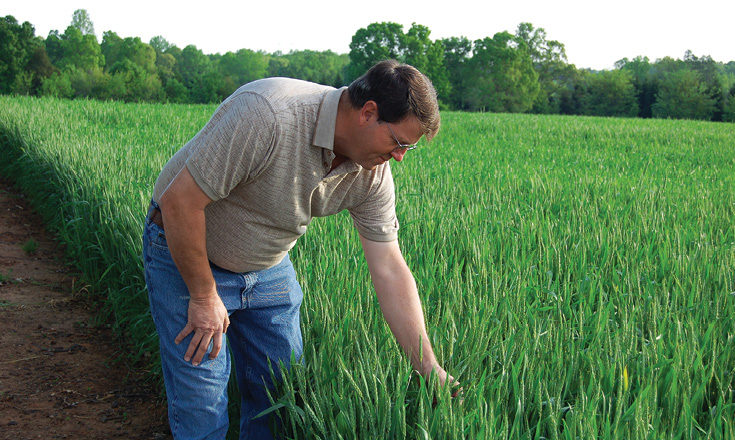No-Till Farmer
Get full access NOW to the most comprehensive, powerful and easy-to-use online resource for no-tillage practices. Just one good idea will pay for your subscription hundreds of times over.

If it weren't for no-till, Jimmy Howard wouldn’t be able to squeeze in a full-time sales career with farming.
The Mooresville, N.C., farmer and feed-company salesman started no-tilling when he took over his father’s cattle, poultry and hay farm 20 years ago. He chose no-till after attending a meeting in Piedmont, N.C., that was promoting it in the early 1990s.
Because he’s farming after hours, on weekends and days off, Howard must make the most of his time and farm ground. No-till and double-cropping are helping him achieve that.
Howard grows corn, soybeans and wheat, and has been double-cropping soybeans into wheat stubble since he started farming. He believes double-cropping is a more profitable rotation.
“We have a longer growing season. As long as we get the soybeans planted before July 1, they mature by early frost and we can get that extra crop in there,” Howard says.
He also uses cover crops, including tillage radishes, cereal rye and crimson clover, to improve soil health and structure.
Howard harvests wheat during the first half of June and no-tills soybeans as soon as he can so fields don’t dry out. He saves a trip in the field by skipping a burndown before planting and makes one herbicide application afterwards.
He normally plants Group 5 soybeans, explaining that Groups 3 and 4 have the potential for higher yields, but also a higher risk due to high humidity. In recent years, he’s planted some late Group 4 beans — around 4.9…